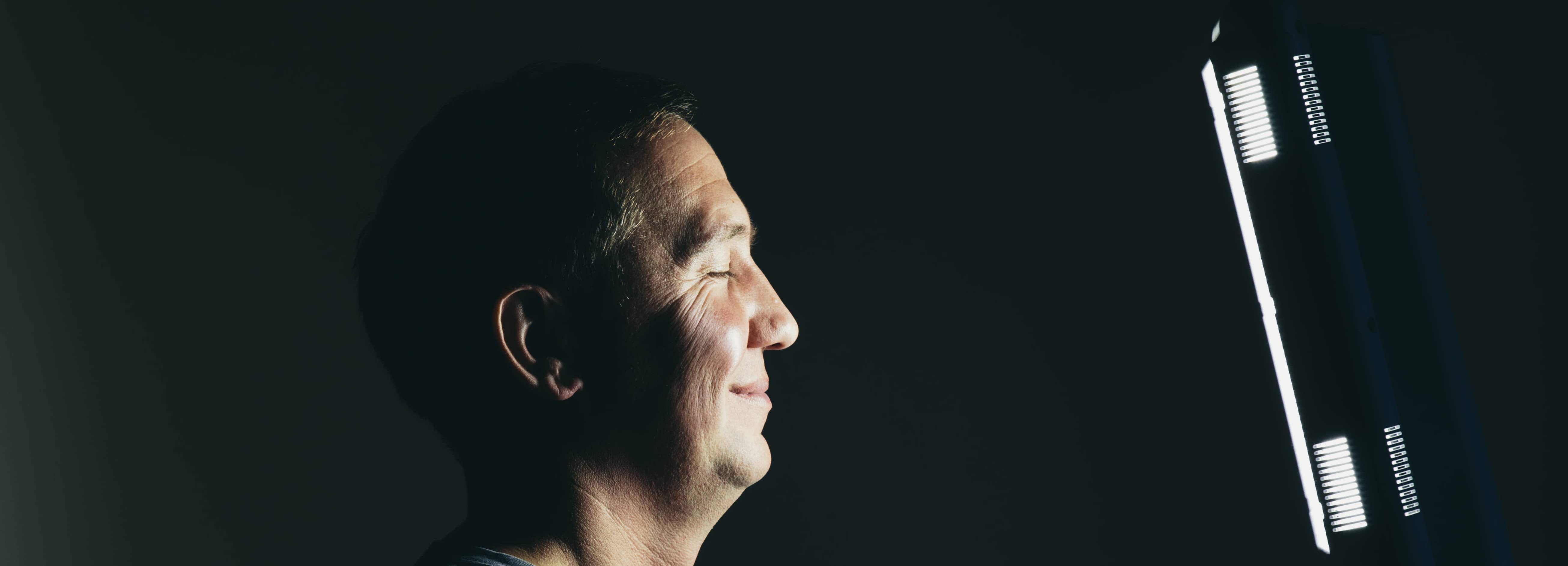Luminotherapy is a form of light treatment that we’ve been hearing about a lot lately. In fact, it’s especially known to help in the treatment of the famous seasonal affective disorder, and even depression itself! But could it be that light therapy is also beneficial for your biological clock?
What exactly is the biological clock and the circadian rhythm?
Let's first define what the biological clock, also known as the circadian clock, is. It's not a Swiss watch or your grandfather's big clock. But it does exist in our brain, in an area called the hypothalamus. The hypothalamus is divided into two nuclei, each with about 10,000 neurons. Their functioning takes place over a period of about 24 hours, and is governed by about fifteen genes expressing themselves in a precise order.

It also regulates the circadian rhythm. It is specific to humans and lasts about a day before repeating itself for another 24h. As its name implies, circadian from the Latin circa means "close to", and diem means "one day". The circadian rhythm influences almost all our biological functions and is used by our internal clock to plan the release of melatonin at the end of the day. It also regulates our body temperature, and controls our attention, which will be at its peak from mid-morning to late afternoon.
Melatonin: a tool to regulate our 24-hour sleep-wake cycle.
However, our internal clock is not infallible, and must regulate itself. Indeed, the circadian rhythm lasts between 23.5 to 24.5 hours. This implies that it must be recalibrated so that we can synchronize ourselves to the rhythm of society which is spread over 24 hours. This is done through light, which conditions the production of melatonin, an essential hormone in the wake-sleep cycle. Indeed, it has a strong influence on our sleep.

A large quantity of melatonin is released before we go to bed, reaching a maximum in production between 2 and 4 a.m., and then decreasing. Right after waking up, melatonin has almost completely disappeared from the body. The secretion of this essential hormone is dependent on the perceived light, in particular via the melanopsin ganglion cells of the eye, which are sensitive to blue light. If these cells perceive this type of light, they’ll send signals to the nuclei of the biological clock, which will transmit these signals to the pineal gland to tell it not to produce melatonin. The sensitivity of these cells is extremely high, a light equivalent to that of a candle can completely prevent the production of melatonin. That's saying!
What is light therapy?
The expression “light therapy” says it all: it's therapy by light. More precisely, it’s a therapy that exposes you to white light, the specifics of which are close to those emitted by the sun in terms of spectrum and brightness.
How can it resynchronize the biological clock?
Especially known to the common man for the treatment of depression, it can also help regulate the circadian rhythm first by blocking the production of melatonin during the day, but also by pushing the body to produce serotonin, dopamine (neurotransmitter acting as a stimulator of wakefulness in the morning) and cortisol. Conversely, the absence of light from light therapy in the evening stimulates the production of melatonin and inhibits the production of the other three chemical compounds mentioned above.

So, light therapy helps realign the circadian rhythm, and therefore the internal clock, to a normal, synchronized 24-hour activity, by promoting the release of the right chemical compounds at the right time of day. No wonder it’s used to fight insomnia! And to put it into practice, nothing could be simpler: all you need is a light therapy lamp! However, we recommend that you consult a doctor before starting the circadian rhythm light, in order to have all the information required for an optimum and beneficial effect.
Learn more: 3 things you should know about your internal clock!
Conclusion: luminotherapy is a great tool to re-educate the internal clock.
In short, light therapy does much more than help us fight the seasonal blues. It allows us to synchronize our internal clock to have a better sleep, by regulating the circadian rhythm. By realigning the latter over 24 hours by reproducing a light similar to the sun during the day, light therapy allows the secretion of the hormones involved in the sleep-wake cycle at the right time. These include melatonin, which is essential for falling into the arms of Morpheus. Luminotherapy with a lamp can therefore re-educate the internal clock, and thus allow you to enjoy a better quality of sleep if it’s done properly. If in spite of this, you're not sleeping well because of your aging mattress, it's time to choose a new one today!

If you liked our blog article, please don't forget to Share it with your friends by clicking the button below!










